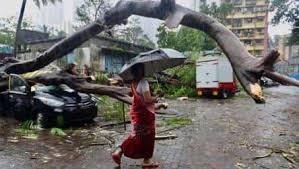One month after the Panchaganga overflowed and flooded Kolhapur, the district administration believes it is fully prepared in the light of the district receiving heavy rainfall for the last four days.
Two national disaster response force (NDRF) teams, 700 volunteers, and 15 boats are in ready mode.
The NDRF teams have been pre-requisitioned in Kolhapur by the district collector Daulat Desai.
“The level of water is currently 33 feet, 4 inches; the danger level is 43 feet and the warning level is 39 feet. I have discussed this with the irrigation department, and considering the rainfall pattern over the past two days, and today (Friday), we do not expect it to cross the warning level. We are keeping a close watch on a few villages,” said collector Daulat Desai.
“Considering the current rainfall pattern, it will go upto 36 feet – maybe three feet more than now. There is no cause for concern as such, but people must remain alert,” he added as a note of precaution.read more
Five automatic release chambers of the Radhanagari dam have been opened, while release of water from the Koyna and Warna dams is underway.
According to the disaster management cell of the district administration, the Gaganbawda region received the highest rainfall (142.50 mm) this week.
Incessant showers across 12 talukas, especially the catchment areas of the Gaganbawda and Radhanagari, totalled to 200mm rainfall in the district.
According to a report from the Kolhapur irrigation department, the district, since June 1, has received 2,262mm of average rain. The irrigation department’s water storage report stated that all the 14 major and minor dams in the district are at 98% capacity or more.
On Thursday, Almatti dam was discharging water at the rate of 1.09 lakh cubic feet per second (cusec), while the Koyna dam was discharging water at 87,338 cusec.
The letter to NDRF reads, “The Kolhapur district has recieved heavy rainfall since the last four days and almost all the major, minor and small irrigation storage dams have reached maximum storage capacity. In view of this, the surplus inflow is being disharged through the respective rivers. If the rains continue as it is, soon we will reach warning level.”




























 WhatsApp us
WhatsApp us